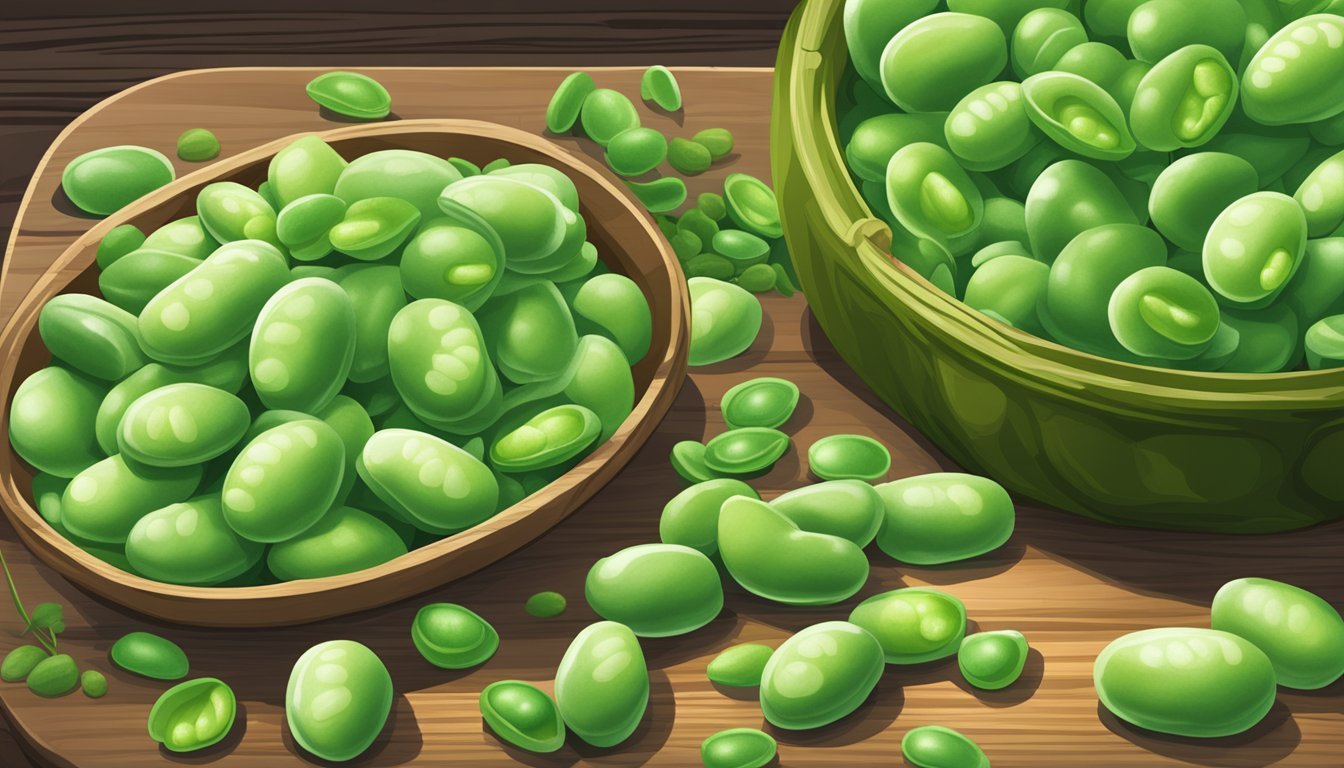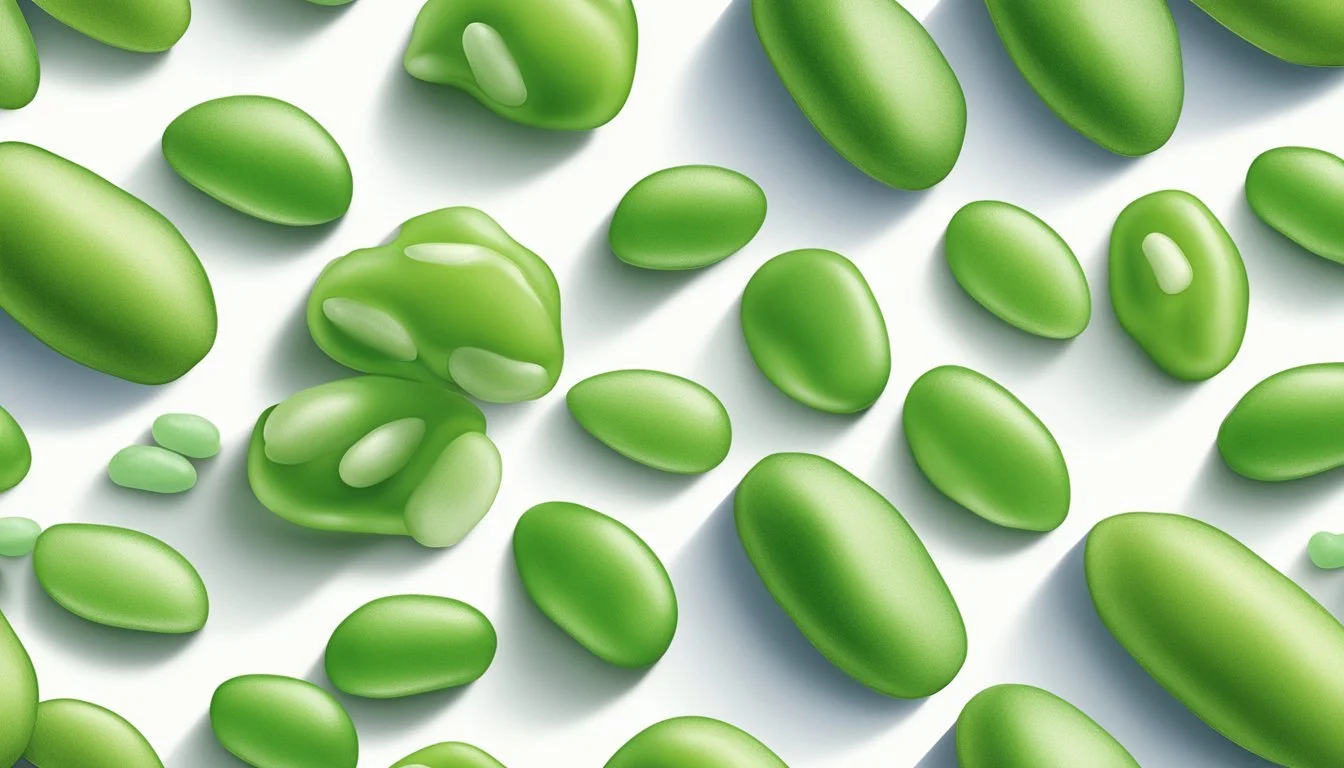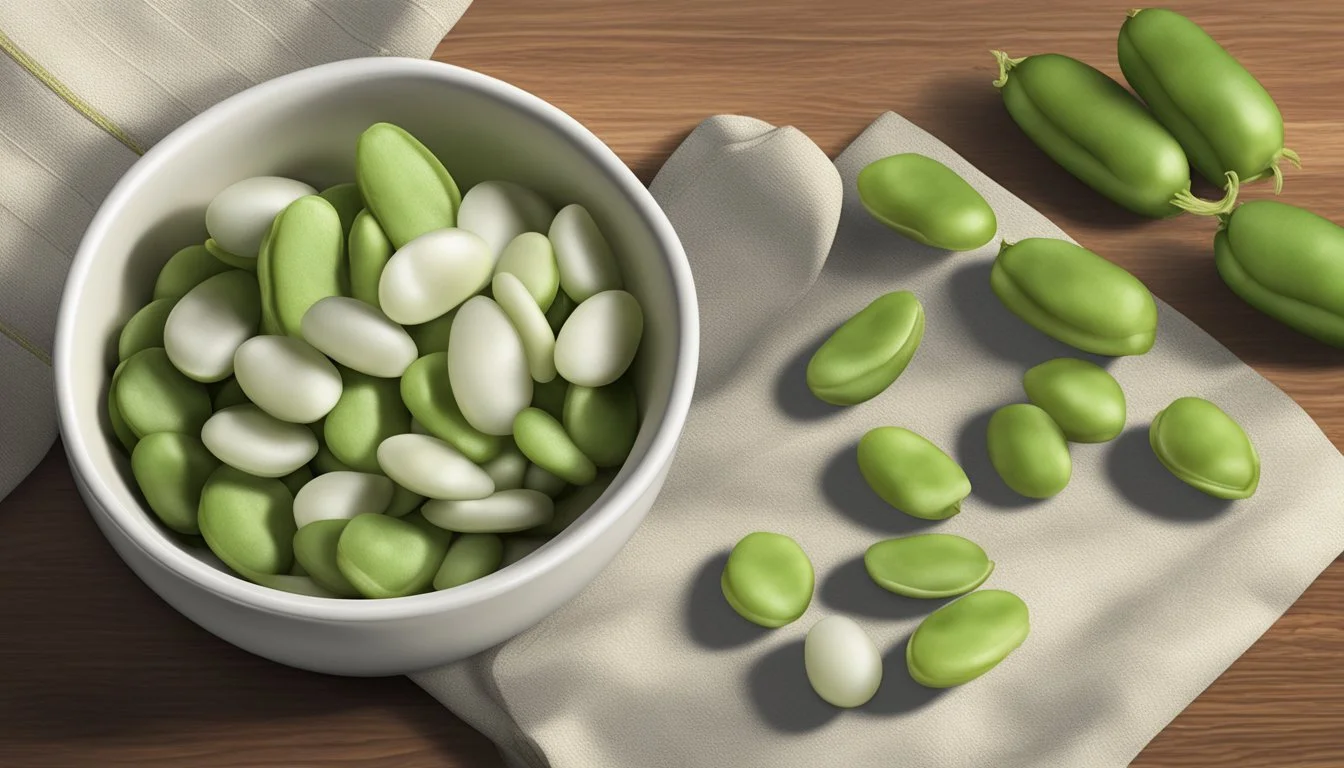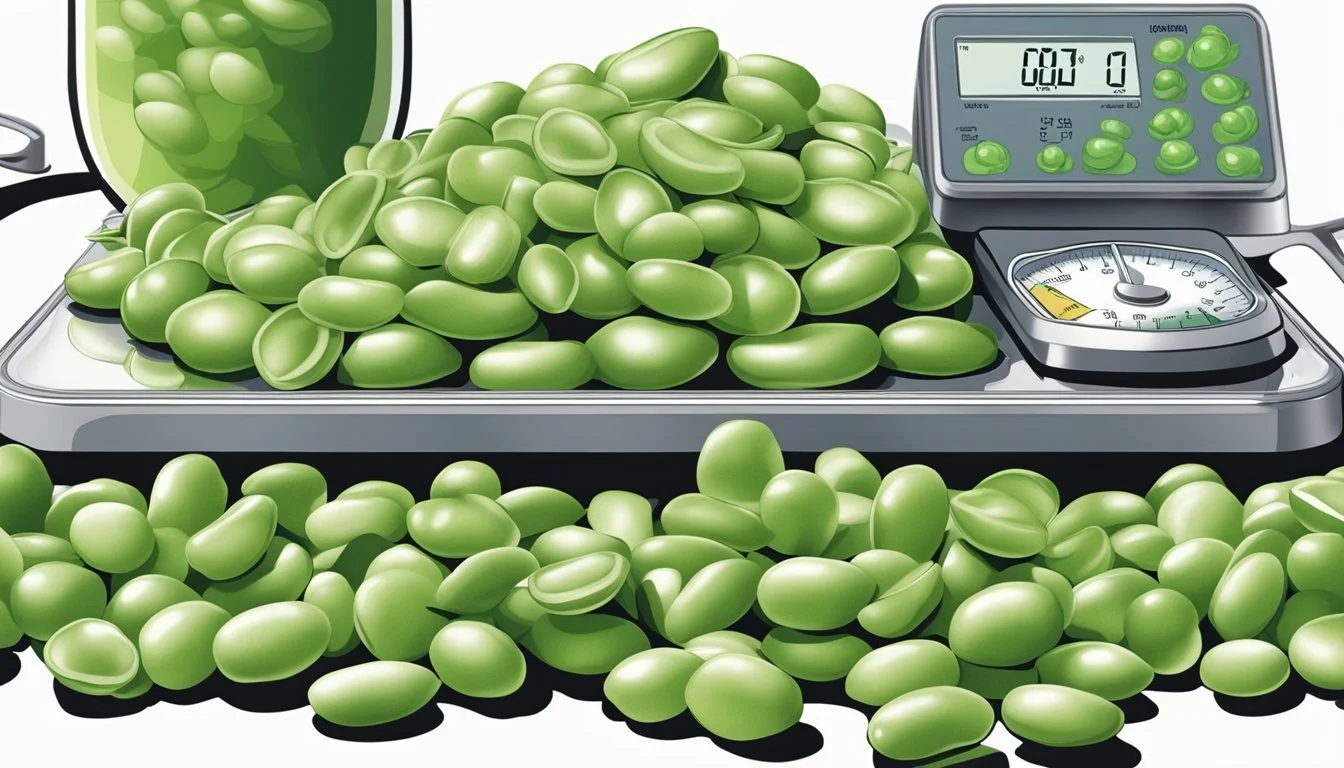Frozen vs Fresh Lima Beans: A Legume Showdown
Lima beans, also known as butter beans, are a versatile and nutritious legume enjoyed in many cuisines. Whether fresh or frozen, these creamy beans offer a wealth of health benefits and culinary possibilities. Fresh lima beans are typically harvested in the fall, while frozen varieties are available year-round, providing convenience and consistent quality.
Frozen lima beans often come in different varieties, such as baby, young, green, or Southern-style. These labels help distinguish them from larger, dried types. Fordhook is another term consumers may encounter when shopping for frozen lima beans, referring to a popular variety developed in the early 20th century. Both fresh and frozen lima beans are rich in essential nutrients, including fiber, protein, vitamins, and minerals, making them a valuable addition to a balanced diet.
Comparative Overview of Lima Beans
Lima beans come in fresh and frozen forms, each with distinct nutritional profiles and sensory characteristics. These differences impact their use in cooking and potential health benefits.
Nutritional Profile Comparison
Fresh lima beans contain slightly higher levels of vitamins and minerals compared to their frozen counterparts. Both forms offer substantial amounts of fiber, protein, and essential nutrients.
Fresh lima beans provide about 7 grams of protein and 9 grams of fiber per cup. They're rich in manganese, copper, and iron.
Frozen lima beans retain most nutrients but may lose small amounts during processing. They contain around 6 grams of protein and 8 grams of fiber per cup.
Both types are excellent sources of potassium, thiamin, and phosphorus. They're low in calories, with about 200 calories per cup.
Flavor and Texture Differences
Fresh lima beans have a creamy, buttery texture and a subtle, sweet flavor. They require more preparation time but offer a superior taste experience.
Frozen lima beans are slightly less creamy but still flavorful. Their texture can be slightly softer due to the freezing process.
Fresh lima beans maintain a firmer bite when cooked properly. Frozen beans may become mushy if overcooked.
The flavor of fresh lima beans is more pronounced and nuanced. Frozen beans have a milder taste but still retain much of the characteristic lima bean flavor.
Cultivation and Harvesting
Lima beans require specific growing conditions and harvesting techniques to produce a bountiful crop. Proper timing and methods are crucial for optimal yields and quality.
Harvesting Techniques
Lima beans are typically ready for harvest 60-90 days after planting. Pods should be picked when they're fully filled out but still green. Gently squeeze the pod - if it's firm and plump, it's ready. For bush varieties, harvest all pods at once. Pole varieties allow for multiple harvests over several weeks.
Hand-picking is the most common method for small-scale cultivation. Larger farms may use mechanical harvesters. Care must be taken not to damage the plants during harvest.
For dry beans, wait until pods turn brown and brittle. Shell immediately after picking to prevent mold growth.
Seasonal Availability
Lima beans thrive in warm weather and are frost-sensitive. In most regions, they're planted in late spring after soil temperatures reach 65°F (18°C). Successive plantings every 2-3 weeks ensure a continuous harvest.
Fresh lima beans are typically available from midsummer through early fall. In Peru and parts of South America, where the climate is favorable, they may be grown year-round.
For home gardeners, freezing or canning excess beans extends their availability beyond the growing season. Commercial frozen lima beans are processed shortly after harvest to preserve freshness and nutritional value.
Preparing and Cooking Methods
Lima beans require proper preparation and cooking techniques to achieve optimal flavor and texture. The methods vary slightly depending on whether you're using fresh, frozen, or dried beans.
Soaking and Boiling Tips
Fresh lima beans don't require soaking, but a quick rinse is recommended. For dried lima beans, soak them overnight in cold water. This reduces cooking time and improves digestibility. After soaking, drain and rinse the beans.
To cook, place the beans in a large pot and cover with fresh water or chicken broth. Use a 3:1 ratio of liquid to beans. Add salt, garlic, or onion for flavor. Bring to a boil, then reduce heat and simmer.
Cooking times vary:
Fresh lima beans: 20-30 minutes
Soaked dried beans: 45-60 minutes
Unsoaked dried beans: 1.5-2 hours
Test for doneness by mashing a bean against the side of the pot. They should be tender but not mushy.
Alternative Cooking Techniques
While boiling is the most common method, other techniques can add variety to lima bean preparation.
Pressure cooking significantly reduces cooking time:
Fresh lima beans: 5-7 minutes
Dried beans (no soaking): 20-25 minutes
Slow cookers offer a hands-off approach. Combine beans with water or broth, seasonings, and optional ham or bacon. Cook on low for 6-8 hours.
For a quick option, use canned lima beans. Rinse and drain, then heat in a saucepan with desired seasonings for 5-10 minutes.
Microwave cooking works well for frozen lima beans. Place in a microwave-safe dish with a small amount of water, cover, and cook on high for 5-7 minutes, stirring halfway through.
Incorporating Lima Beans into Your Diet
Lima beans offer versatility in cooking and can be used in various dishes. They provide a hearty, nutritious addition to meals and work well as both a main ingredient and accompaniment.
Lima Beans as a Side Dish
Lima beans make an excellent side dish. Sauté them with garlic and herbs for a simple, flavorful option. Add butter and seasonings to steamed lima beans for a classic preparation.
For a Southern-inspired dish, try succotash. Combine lima beans with corn, bell peppers, and onions. Season with salt, pepper, and a touch of bacon for extra flavor.
Create a lima bean casserole by mixing the beans with cream, cheese, and breadcrumbs. Bake until golden and bubbly for a comforting side.
Mains and Salads
Lima beans can star in main courses and salads. Make a hearty lima bean soup with vegetables, herbs, and your choice of meat or keep it vegetarian.
Toss cooled lima beans into green salads for added protein and texture. Create a bean salad by combining lima beans with other legumes, diced vegetables, and a tangy vinaigrette.
Use lima beans in stews or curries for a filling meal. Blend them into hummus for a twist on the classic dip. Mix lima beans with rice and spices for a complete protein dish.
Health Benefits and Dietary Considerations
Lima beans offer numerous nutritional advantages and potential health benefits. They also come with some considerations to keep in mind.
Nutritional Advantages
Lima beans are highly nutritious, packing a powerful punch of essential nutrients. They contain significant amounts of fiber, which aids digestion and promotes feelings of fullness. These legumes are an excellent source of plant-based protein, making them valuable for vegetarians and vegans.
Lima beans provide important vitamins and minerals. They're rich in folate, crucial for cell growth and DNA formation. Potassium in lima beans supports heart health and helps regulate blood pressure.
These beans also contain iron, which is essential for red blood cell production. Their magnesium content contributes to bone health and muscle function. Lima beans offer manganese, copper, and phosphorus as well.
Potential Health Risks
While lima beans are generally safe and healthy, there are some considerations to keep in mind. Raw or undercooked lima beans contain linamarin, a compound that can be toxic. Proper cooking eliminates this risk.
Some people may experience digestive discomfort when consuming lima beans due to their high fiber content. Gradually increasing intake can help minimize this issue.
Lima beans contain antinutrients like phytates, which can interfere with mineral absorption. Soaking and cooking the beans properly can reduce these compounds.
Individuals with legume allergies should avoid lima beans. Those on low-potassium diets for kidney issues may need to limit their intake due to the beans' high potassium content.
Storage and Preservation
Proper storage techniques are crucial for maintaining the quality and extending the shelf life of lima beans. Different methods apply to fresh, frozen, and dried varieties, each with specific requirements for optimal preservation.
Storing Fresh and Frozen Lima Beans
Fresh lima beans require refrigeration to maintain their quality. Store them in perforated plastic bags in the crisper drawer of the refrigerator. They typically last 3-5 days when stored properly.
Frozen lima beans should be kept at 0°F (-18°C) or below. Once opened, transfer any unused portion to an airtight container or resealable freezer bag. Remove excess air to prevent freezer burn.
For long-term storage, blanch fresh lima beans before freezing. This process involves briefly boiling the beans, then immediately cooling them in ice water. Pat dry and freeze in a single layer on a baking sheet before transferring to freezer bags.
Shelf Life and Quality Maintenance
Frozen lima beans maintain their quality for up to 9 months in a regular freezer, and up to 14 months in a deep freezer. After this time, they remain safe to eat but may lose some flavor and texture.
Dried lima beans have a significantly longer shelf life. When stored in airtight containers in a cool, dry place, they can last up to 2-3 years. For maximum longevity, keep them away from light and moisture.
Canned lima beans have the longest shelf life, lasting 2-5 years when stored properly. Keep them in a cool, dry pantry and check for any signs of damage or swelling before use.
To maintain quality, always use the oldest beans first. Rotate stock and check periodically for any signs of spoilage, such as discoloration, off-odors, or mold growth.
Varieties of Lima Beans
Lima beans come in several distinct varieties, differing in size, color, and shape. These variations offer unique culinary experiences and nutritional profiles.
Baby Lima vs Large Lima Beans
Baby lima beans are small, tender, and have a delicate, buttery flavor. They cook quickly and are often used in soups and salads. Large lima beans, also known as butter beans, have a creamier texture and stronger flavor. These beans are ideal for hearty stews and casseroles.
Butter peas are a small variety of lima bean popular in Southern cuisine. They have a mild, sweet taste and smooth texture. Gigante beans, as their name suggests, are the largest lima bean variety. They have a meaty texture and absorb flavors well, making them perfect for slow-cooked dishes.
Color and Shape Variations
Lima beans exhibit a range of colors and shapes. Most commonly, they are cream-colored or pale green. Some varieties have unique color patterns, including speckled or mottled appearances.
In terms of shape, lima beans are typically flat and kidney-shaped. Baby limas are more rounded compared to their larger counterparts. The texture of lima beans is generally smooth, contributing to their buttery mouthfeel.
Fresh lima beans are often bright green, while dried varieties tend to be paler. When cooked, lima beans may change color slightly, often becoming more muted in tone.
Recipe Suggestions and Pairings
Lima beans offer versatility in cooking, pairing well with various ingredients to create delicious dishes. From classic recipes to innovative uses, these legumes shine in both traditional and modern culinary applications.
Classic Lima Bean Recipes
Lima beans and ham form a timeless combination. To prepare this dish, simmer a ham hock for 2 hours to create a flavorful stock. Add frozen lima beans, chopped garlic, onion, and seasonings like onion soup mix, sugar, garlic powder, and black pepper. Cook until the beans are tender.
Lima bean succotash is another beloved recipe. Combine lima beans with corn, tomatoes, and other vegetables for a colorful side dish. For a twist, try a spicy succotash dip as an appetizer.
A simple lima bean salad offers a quick and easy option. Mix cooked lima beans with sweet potatoes, garlic, burrata cheese, parsley, and lemon juice for a refreshing dish.
Innovative Culinary Uses
Lima beans can be incorporated into unexpected dishes for added nutrition and texture. Blend them into a creamy dip with herbs and spices for a unique appetizer.
Use lima beans as a protein-rich addition to vegetarian burgers or meatless meatballs. Their mild flavor complements various seasonings, allowing for diverse flavor profiles.
Create a lima bean risotto by substituting some of the rice with these legumes. This twist on the classic Italian dish adds protein and fiber.
For a Mediterranean-inspired dish, combine lima beans with roasted vegetables, feta cheese, and a lemon-herb dressing. This salad works well as a light meal or side dish.
Experiment with lima bean flour in baking for gluten-free options. It can be used in flatbreads, pancakes, or as a thickener for soups and sauces.
Environmental Impact and Sustainability
Lima beans, like other legumes, offer significant environmental benefits compared to many protein sources. Their cultivation and consumption can contribute to more sustainable food systems and reduced ecological footprints.
Sustainable Farming Practices
Lima beans require minimal water and fertilizer inputs. They naturally fix nitrogen in the soil, reducing the need for synthetic fertilizers. Crop rotation with lima beans can improve soil health and biodiversity. These legumes have a low carbon footprint, emitting fewer greenhouse gases during production than animal-based proteins.
Farmers can implement no-till or reduced tillage methods when growing lima beans. This practice helps prevent soil erosion and preserves beneficial soil microorganisms. Lima beans also provide ground cover, further protecting topsoil from erosion and water loss.
Impact on Ecosystem
Lima bean cultivation supports pollinator populations, as the plants produce flowers that attract bees and other beneficial insects. This promotes biodiversity in agricultural areas. The plants' root systems help prevent soil compaction and improve water infiltration.
Growing lima beans can reduce pesticide use compared to other crops. These legumes are relatively resistant to pests and diseases. Their inclusion in crop rotations can break pest and disease cycles, benefiting the entire farm ecosystem.
Lima beans have a lower water footprint than many other protein sources. They require less irrigation, making them a more sustainable choice in water-stressed regions.









